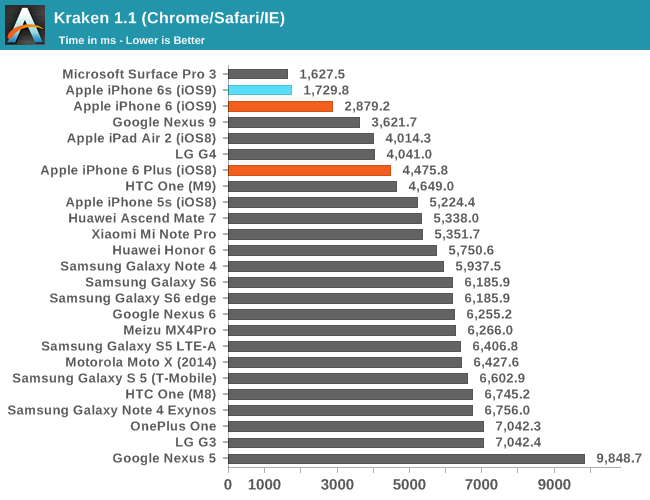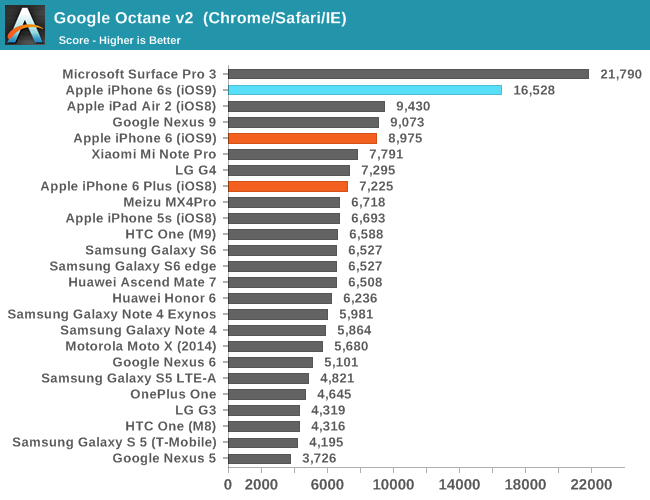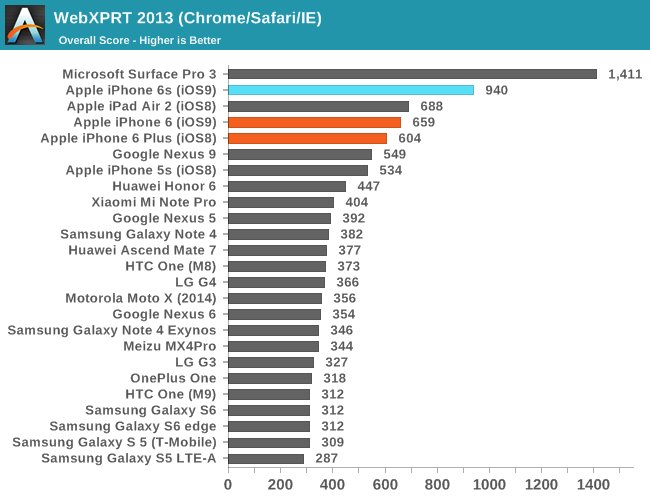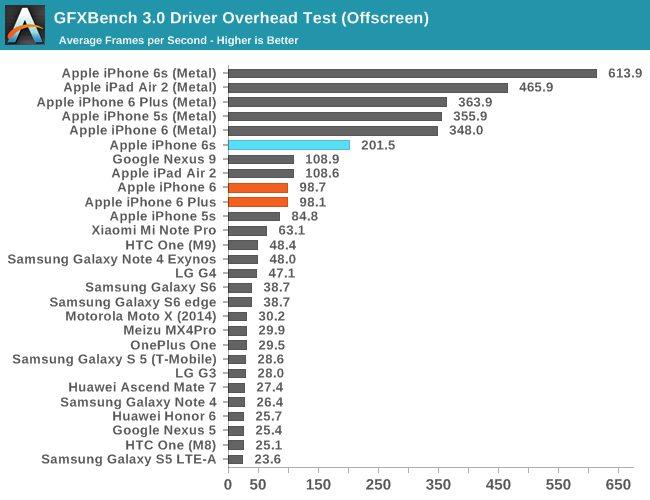sm625
Diamond Member
- May 6, 2011
- 8,172
- 137
- 106
I'll stick with Apple over a creepy stalker phone.
lol are you saying apple doesnt make creepy stalker phones too? This phone will get your data to the NSA faster than any other phone!
I'll stick with Apple over a creepy stalker phone.
Web based benchmarks do not seem that indicative of overall CPU performance anymore, at least cross-compared across OSes.
While the CPU is certainly faster than before, we can't say how much of that is due to the highly, highly optimized browser and specific optimizations targeted to the common web benchmarks.
You have to give it to Apple though, their latest browser is untouchably well optimized at least for these benchmarks.




I have played with iPhone 5, 5S, 6 (soon 6S) and my experience for my smartphone needs is the first 3 phones are all fast enough. I guess I just don't care enough about SoC speed in real world usage?Not trying to downplay the performances increases in the iPhone 6S but it's not as if iPhone 5S or 6 are slow phones. To me personally the upgrade to 2GB of RAM matters a LOT more than CPU performance up to 70% faster and GPU performance up to 90% faster.
How come there is no record of any A9 benchmarks on the geekbench result browser?
There are results now. Guessing you haven't checked today.
https://browser.primatelabs.com/ios-benchmarks
Are there any links to individual results? can't find a way to see it.
Look for iphone8,1 or iphone8,2.How come there is no record of any A9 benchmarks on the geekbench result browser?
Eventually, ARM could become a serious threat to Intel's CPUs though in the next 5-10 years if this level of IPC/performance improvements continues. I can see Apple putting an A15X chip into their $1300 Macbook. Intel is not going to be happy.
A15X? Doubt it will be that far off. If Apple keeps its trajectory (that's a big if), it will be faster than Intel with A10X.
Already - A9X is likely to be competitive with Skylake Core M in single thread and higher is multithread CPU performance if they keep the 3 core configuration. The A9X will be a lot faster than the skylake Core M in GPU performance.
My rough estimates for Geekbench 3.3 single thread
A8 -> A9 = 1.7x (Apple claims)
A8X -> A9X = 1.8x
A8X/A8 => 1808/1608=1.124
Therefore A9X => 2489*1.124*1.8/1.7=2960
Let's see if that's accurate in a bit over a months time
The only thing holding back Apple using their A-chip range in MacBooks is ARM at the moment. Once they have a solution to OSX on ARM, then their chips won't hold them back.
What's next for Intel Core M after Skylake and when is it expected? Well just checked and Cannonlake has been delayed to the 2nd half of 2017, so they have gap-filled with Kabylake, although it's not expected to increase performance considerably. By that stage, Apple could be on 6 or 8 cores with the A11X.
Not sure, but there is a slight chance that the next processor will be at 10NM node but either way, the next generation of 14/16NM chip should bump up the IPC further. Maybe like what occurred between A7 and A8. A 20 to 30% IPC bump along with 2GHz+ clock should provide another major leap.
Yeah of course, Apple doesn't have to obey the laws of physics..
Yeah of course, Apple doesn't have to obey the laws of physics..
Kill me, but the story is repeating... Apple is strong enough to move their hardware to ARM and to make it better is the same story like Power PC and Intel... Only that Intel is now the one who will be kicked out.
The only downside is that they don't have a strong home made GPU... Maybe time to buy AMD GPU division?
I don't think it's as big a deal. Apple could simply release both ARM and x86 Architecture products until x86 starts selling so low that they end of life it. The iPad Pro I think is the beginning of a multi-year transition. I'd like them to release a full blown headless iOS desktops that would be in the same category as the Mac Mini and the Mac Pro.
If Microsoft, Adobe, Avid, etc doesn't port their key software over, another developer will enjoy the market they ignore. A big move would be Xcode on iOS...
Not sure, but there is a slight chance that the next processor will be at 10NM node but either way, the next generation of 14/16NM chip should bump up the IPC further. Maybe like what occurred between A7 and A8. A 20 to 30% IPC bump along with 2GHz+ clock should provide another major leap.
If by "next processor" you mean the A10, then no, it will not be 10nm. A10 is 100% 16FF+.


